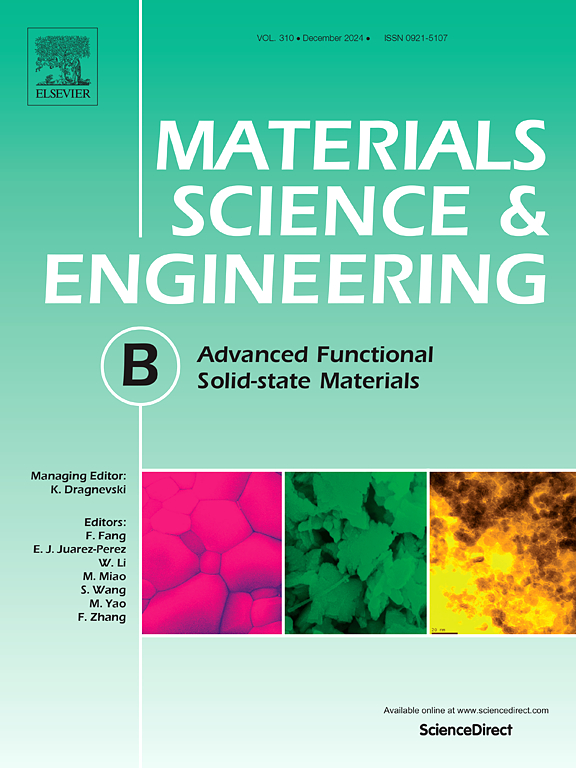Annealing temperature optimization for dip-coated Cu2SnS3 thin films: Sustainable pathway to CTS/Zn(O, S) solar cells via numerical simulation
IF 3.9
3区 材料科学
Q2 MATERIALS SCIENCE, MULTIDISCIPLINARY
引用次数: 0
Abstract
Earth abundant Cu2SnS3 (CTS) films were fabricated on glass substrates using facile dip coating technique. For exploring the role of annealing temperature in the formation of CTS films, the deposited films were annealed in an inert atmosphere at various temperatures. XRD analysis confirmed the formation of Cu2SnS3 and its monoclinic structure was further identified by Raman spectroscopy. Hall measurements revealed the p–type nature of films and observed a carrier concentration of ∼ 1017 cm−3 for all the samples. High absorption coefficient value (α > 104 cm−1) and direct band gap in the range of 1.43 eV − 1.75 eV make the samples a suitable candidate in the field of photovoltaics. The influence of these process parameters on a solar cell based on CTS was analyzed by the SCAPS simulation program. At an annealing temperature of 475 °C, the simulated solar cell demonstrated the best power conversion efficiency PCE of 19.77 %.

求助全文
约1分钟内获得全文
求助全文
来源期刊

Materials Science and Engineering: B
工程技术-材料科学:综合
CiteScore
5.60
自引率
2.80%
发文量
481
审稿时长
3.5 months
期刊介绍:
The journal provides an international medium for the publication of theoretical and experimental studies and reviews related to the electronic, electrochemical, ionic, magnetic, optical, and biosensing properties of solid state materials in bulk, thin film and particulate forms. Papers dealing with synthesis, processing, characterization, structure, physical properties and computational aspects of nano-crystalline, crystalline, amorphous and glassy forms of ceramics, semiconductors, layered insertion compounds, low-dimensional compounds and systems, fast-ion conductors, polymers and dielectrics are viewed as suitable for publication. Articles focused on nano-structured aspects of these advanced solid-state materials will also be considered suitable.
 求助内容:
求助内容: 应助结果提醒方式:
应助结果提醒方式:


